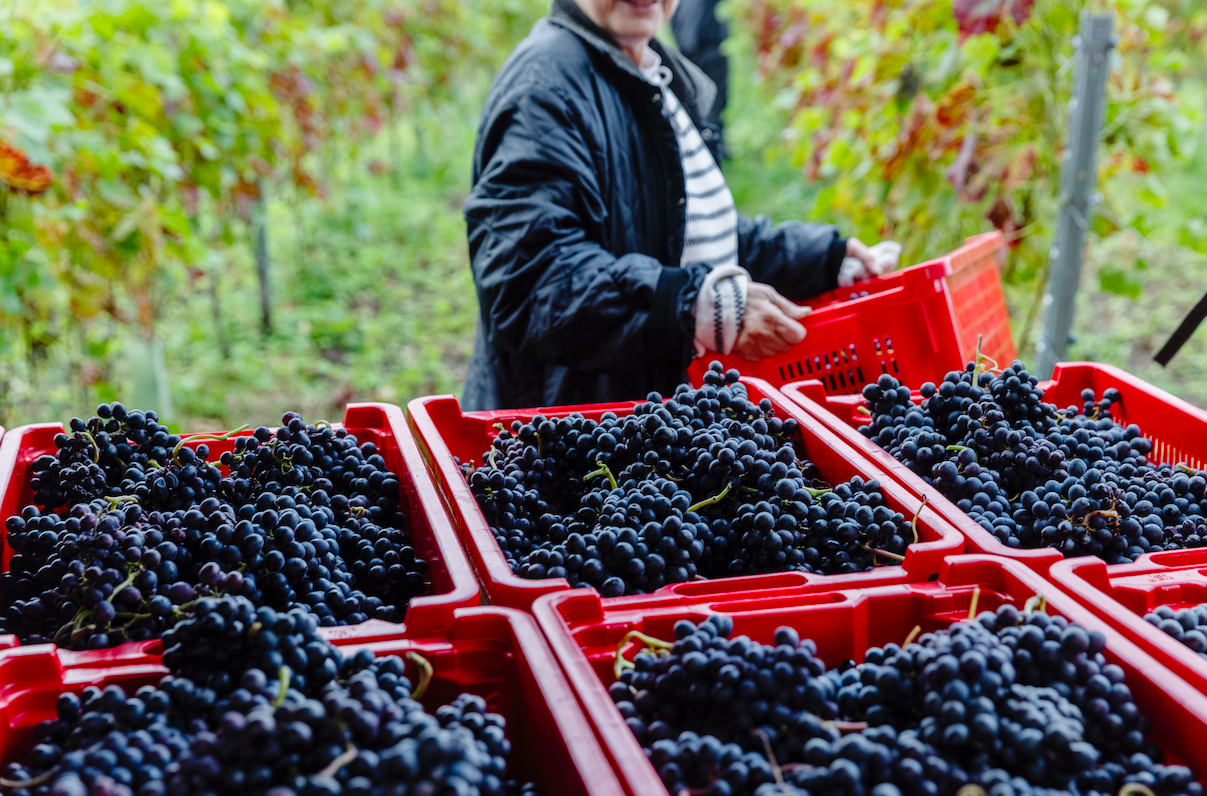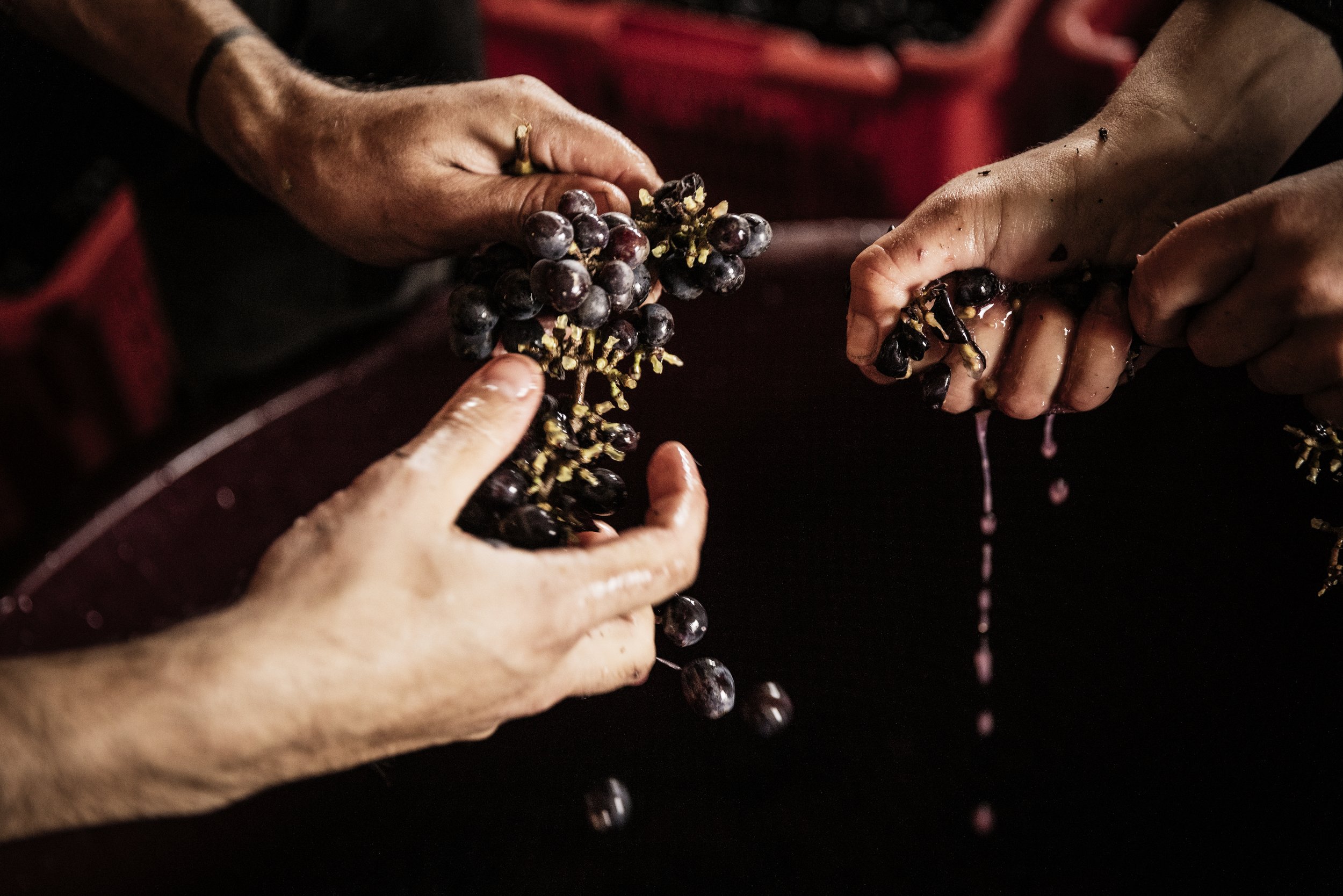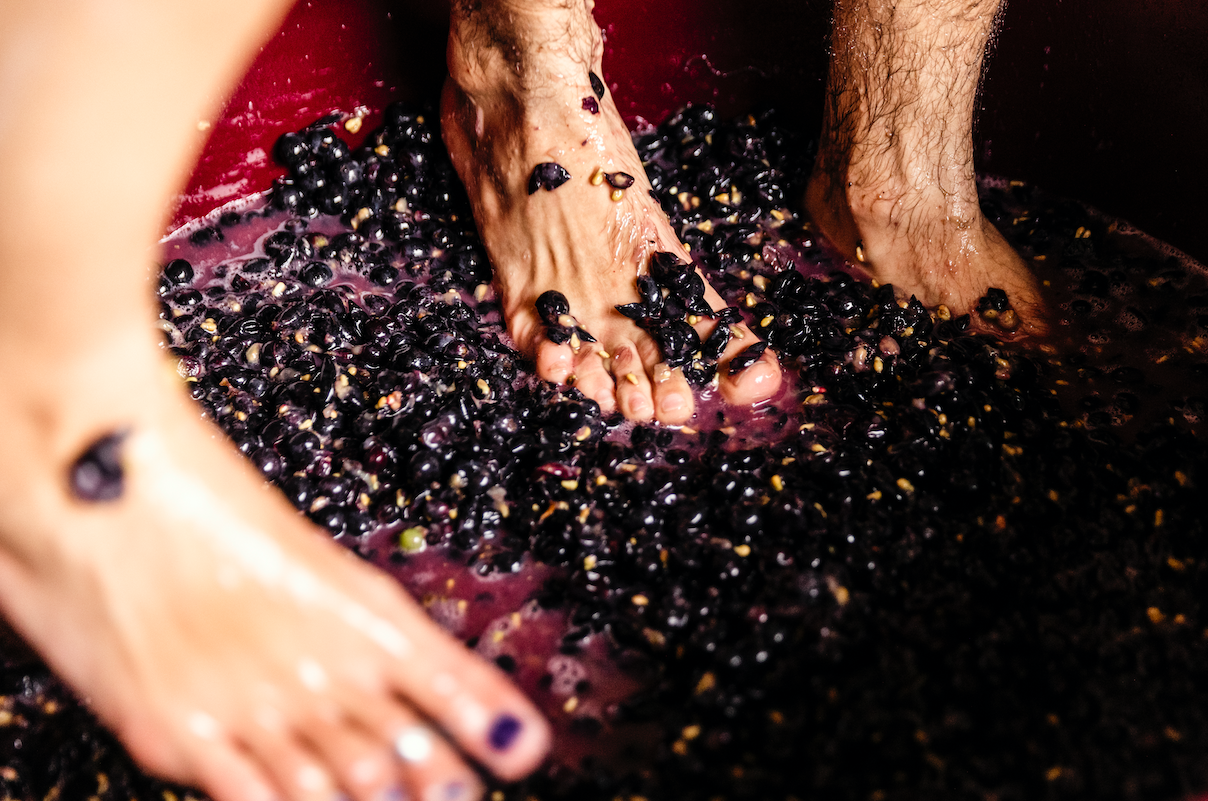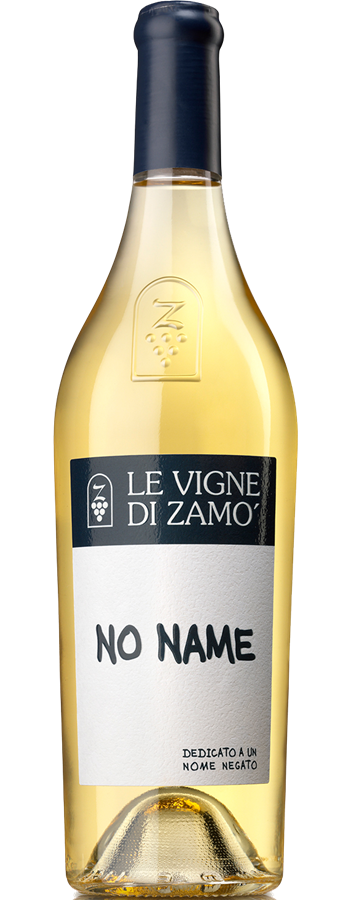Newsletter 12
The Vineyard
Lush rows
An intense year has past since last time, neither us nor the vineyard has quite kept up with everything that has been going on and we can now enjoy some great progress!
Vintage 2021 has offered favorable conditions such as no frost during spring, regular rains and warm, sunny days. The vines have shown clear signs of recovery and in the ground we are starting to see real results of rest and bio-diversity. Before planting in 2018 we knew that we had a slow moving project ahead of us, and we are now starting to get a true grasp of just how long it actually takes to not only get the production started but above all to establish a healthy and rich soil. Patience is the key to success in this business, and we have a lot of it!
For producers in the south of Europe 2021 has been the worst vintage ever recorder, with severe frost damage, extreme heat, flooding and hail storms. For some, this has resulted in up to 70% loss of production. In Sweden on the other hand, many producers have done their best harvest yet. This is a result of milder and more preferable conditions, in combination with yet another year older vines in the vineyard. We cannot forget that Sweden is a young wine country, and most vineyards are still in their growth phase where each year means more productive vines.
The weather conditions that have caused the impaired yield in southern Europe is a consequence of climate change. One conclusion at least we have made after this vintage is that more need to follow the footprints of the swedish vinegrowers. We all need to convert to a sustainable way of working and the easiest way to switch is to start growing resistant vines that require little to no fungicides. So far Sweden is the most climate friendly wine country in the world thanks to our sustainable and resistant varieties!
The harvest of Merlot Kanthus increased from 300 kg in 2020 to more than 1000 kg this year. Photo: Joel Nilsson
The harvest 2021 became a success. The grapes were healthy, the flavours well developed and the volumes increased to four times as much as 2020. Thanks to larger volumes we have been able to streamline the production and increas the extraction of grape juice more than six times. Finally we can start to plan for the launch of our wine at systembolaget! Our first vintage resluted in 300 precious bottles we chose to keep in the winery, from 2021 we can make around 2000 bottles that will be distributed to Systembolaget, restaurant and of course wine tastings in winery. More information about the sale launch will come.
The Winery
Miniature versions the different wines we’ve produced since the harvest in October.
With larger volumes we have been able to inaugurate the bigger investments we have done in the winery, the foremost (and most fun) was to finally start our big press. The wine press is the key to a qualitative handling of the carefully grown grapes and we have chosen a pneumatic press for our production. The pneumatic press works with an air compressor and a canvas that slowly inflates to a balloon during the press cykle. Thanks to the slow pressing and a soft pressure we can extract the exact flavours we desire and in the meantime control tannins and color in the must, without loosing efficiency in extracted litres per kilo.
Our only goal for this year was to harvest enough grapes to be able to finally use our press, at least 200 kilos are required for it to function properly, and our wish came true!
We now have four different wines ageing in the winery. some will be mixed for a final belnd while others will be bottles separately. One of the most fun activities this year was to do a ripasso on the red wine we made 2020. Ripasso is a well known name in the wine world, and most of us think of the red wine from Veneto in northern Italy that is made from the grapes used in producing an Amarone. But in reality ripasso is mearly a technique, and we have been looking forward to using it in Sweden. Ripasso means to re pass an older wine together with new grapes and the technique is executed like this;
Harvest blue grapes and vinify to a red wine that is then put to store in the winery
At a later vintage new blue grapes are harvested and the vinification of a new red wine is started
After fermentation and maceration (when the must is fermenting together with the skins) the wine is separated from the skins
The separated skins are now passed over to the first red wine that has been storing in the winery and a new maceration and small fermentation is restarted. Tonnes of new flavours and complexity is added to the first wine in the process.
A small, carefully chosen, part of the harvest of Merlot Kanthus went to the making of a ripasso on our red wine Hamra from 2020. With small quantities it is nearly impossible to use machinery in the process and therefor we chose the next best thing - hand and foot work! The grapes were destemmed by hand and later crushed by foot before ot was set aside to start fermentation.
Manually labour. Photo: Joel Nilsson
The wine is now resting a few more months before it is time to bottle. Tasting Hamra - Ripasso will only be available through tastings with us
Attention to Långmyre Vineri and swedish wines
With the difficult vintage in southern Europe and the many climate disasters that have affected several countries and regions, swedish wine has been brought attention to both nationally and internationally. French Le Monde among others wrote an article where Långmyre vineri got great coverage, which led to us being asked to participate in the radio show on Wedish public radio - Nordegren & Epstein. It was a thrilling and nervouse experience where to got to talk about our work and what it is like to cultivate wine in Sweden in general. If you haven’t heard the show yet, you can do so HEAR
Participating in Nordegren & Epstein i P1, october 7 2021
During the year Emma has also been appointed head of the board for a new organisation for commercial vineyards, Swedish Organisation for Oenology and Viticulture. The world of wine is faceing several big challenges and Sweden has the possibility to lead the way towards quality wine produced in a sustainable way. The organisation has gathered the biggest wine producers in Sweden and the work has been focused on establishing communication with government, educational system and international organisations. We are so proud that Emma has been chosen to take the lead.
The Best Wine Right Now
Friulano 2020 - Torre Rosazza Art. nr 78508, 161 SEK (minimum 6 bottles when ordering)
No Name Friulano - Le Vigne di Zamò Art. nr 78307, 199 SEK
Since our varieties are cultivated in such small areals it is still very hard to get your hands on a bottle of wine produced from one of them. Of the three green varieties we are growing two of them derive from the italian variety Friulano. That’s why we thought we would recommend two wines made from 100% Friulano instead. The grape is cultivated and consumed mostly in it’s home region Friuli, where it is paired with asparagus, pasta, fish or white meat. Due to low demand internationally no wines are available in the ordinary selection and must be ordered online, sometimes in collies of six, but believe us - it is worth it! The wines are rich passion fruit, pear, minerality and herbs.
Fun fact;Up until 2007 the grape was called Tocai Friulano, but had to remove Tocai from the name after a long dispute with Hungary The wine No Name - Dedicato a un nome negato (deditaced to a denied name) is a some that subtle protest from the producers againts the court ruling.









